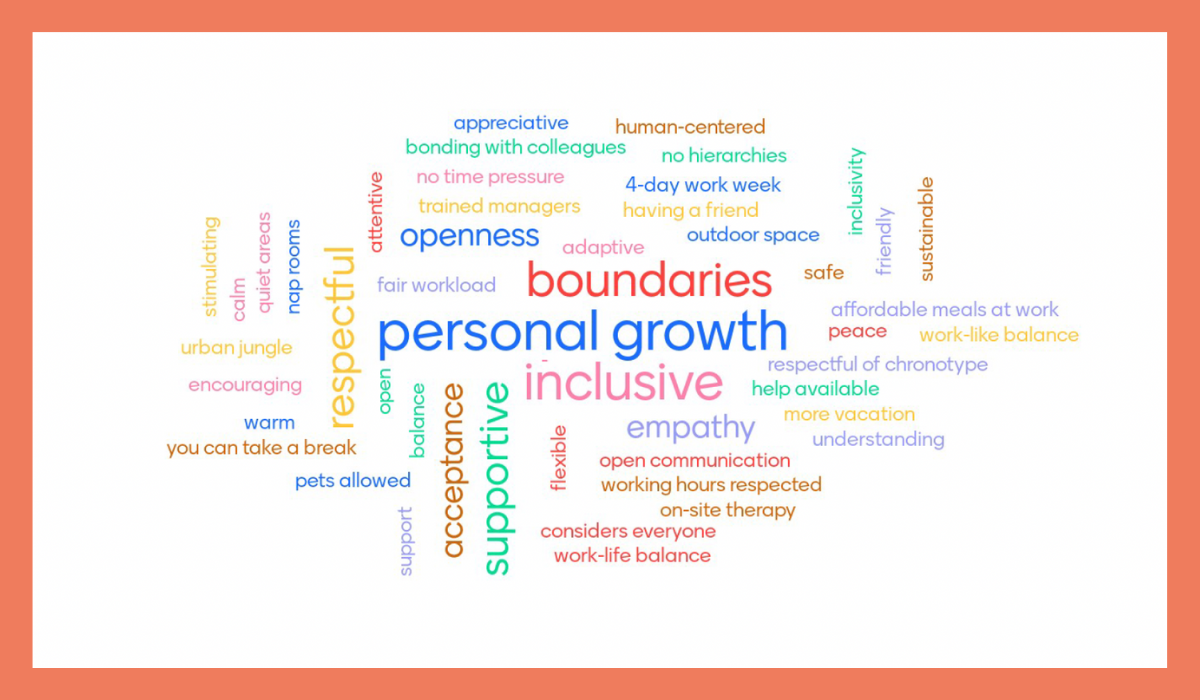What does a healthy workplace look like for young people? A reflection for World Mental Health Day

Mental health in the workplace: it’s time for change
World Mental Health Day is an opportunity to raise awareness about mental health, fight stigma and, most importantly, foster conversations. When the theme of World Mental Health Day 2024 was announced, ‘It is Time to Prioritise Mental Health in the Workplace’; we took the opportunity to ask how younger generations envisage the workplace of the future.
‘Mental Health in the Workplace’ is an extremely relevant topic in today’s society, where Gen Zs are driving a conversation that could positively impact workplace practices in the long-term. According to the 2022 Cigna Europe study, 91% of Gen Z respondents reported feeling stressed at work, and 59% of them reported experiencing burnout. These data cannot be overlooked, especially if we compare them to the 42% of European millenials who report feelings of stress at work the same year (Deloitte 2022 report). However, Gen Z is proving to be a driving force for change, as they are more and more vocal about the need for mental health support and intersectional approaches to lifestyle sustainability for both people and the planet.
In light of this, we asked the young leaders of Mental Health Europe’s Youth Leadership Programme to tell us what an ideal workplace would look like for them: only by listening to their voices can we ensure that the workplaces of the future will go from being a space of stress to a space of growth an opportunity.
What does an ideal workplace look like for young European leaders?
According to Lea, “ dream workplace would promote open, judgement-free conversations about mental health, allowing employees to share struggles with colleagues and supervisors. Regular check-ins would exist to talk about personal challenges while respecting boundaries.” Maren shares the need for more open conversations about mental health, envisioning a workplace where “mental health is as validated as physical health. Where we can talk stigma-free about mental health issues […], and where our employer engages for our mental health, too.”
Having spaces to discuss mental health is not just a positive exercise, but Lisa points out that “In a workplace where mental and physical health are prioritized, employees are more motivated, creative, and engaged.” Ole highlights the link between a healthy workplace and people’s well-being, too, explaining that “The ideal workplace […] should include the right to contribute, meaning respect for your ideas and work, no matter your position, places to withdraw from the busy atmosphere for a little and relax to regain energy.”
A safe space to communicate mental health issues seems to be one of the most relevant aspects of an ideal workplace for the Gen Z generation. Tjaša shares: “My dream workplace promotes mental health through open communication and emotional safety. , everyone shares what made them happy recently, fostering connection and support, creating a nurturing and uplifting environment.”
Paul explains how “Such a workplace would meet everyone’s needs, ensuring accessibility and inclusivity.” Sacha agrees with him, pointing out how “an ideal workplace would involve considering each other’s differences and putting a conscious effort to be empathetic toward one another.”
What does this look like in practice? Franziskus attempts to explain what how an ideal workplace would require: “For me, an ideal workspace would include an independent, licensed to support people. Someone I can go to if I need advice, no matter the topic. This person should also have enough time to monitor the people and group dynamics.”
Young people know what they need to thrive in and outside the workplace. Mental health awareness, inclusivity and a space for healthy conversations are the basic requirements to foster mental well-being at work. Paul summarises: “A workplace would meet everyone’s needs, ensuring accessibility and inclusivity. It would have plenty of plants, rooms for napping or retreating, regular breaks, and access to counselling for support.“
Listen to what our young people have to say:
View this post on Instagram
Stay connected
Get our latest news, personal stories, research articles, and job opportunities.